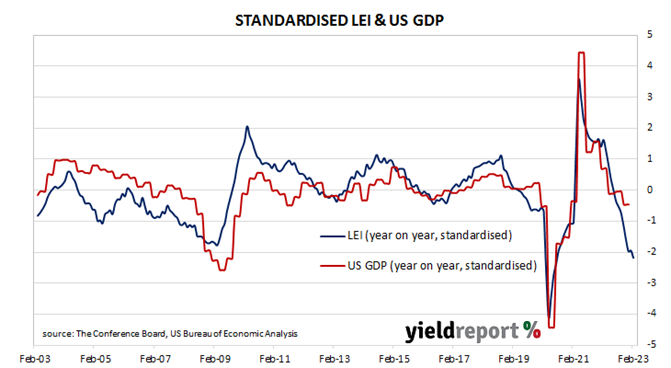Summary: Conference Board leading index down 0.3% in February, less than expected; risk of recession in US economy; regression analysis implies negative US GDP growth to May.
The Conference Board Leading Economic Index (LEI) is a composite index composed of ten sub-indices which are thought to be sensitive to changes in the US economy. The Conference Board describes it as an index which attempts to signal growth peaks and troughs; turning points in the index have historically occurred prior to changes in aggregate economic activity. Readings from March and April of 2020 signalled “a deep US recession” while subsequent readings indicated the US economy would recover rapidly. More recent readings have trended lower, implying implied lower US GDP growth rates.
The latest reading of the LEI indicates it decreased by another 0.3% in February. The result was slightly worse than expected but it was in line with January’s figure.
“While the rate of month-over-month declines in the LEI have moderated in recent months, the leading economic index still points to risk of recession in the US economy,” said Justyna Zabinska-La Monica of The Conference Board.
US Treasury bond yields dropped on the day on the back of banking sector instability. By the close of business, the 2-year Treasury yield had shed 35bps to 3.82%, the 10-year yield had lost 15bps to 3.43% while the 30-year yield finished 8bps lower at 3.63%.
In terms of US Fed policy, expectations of higher federal funds rates over the next 12 months were reined in. At the close of business, contracts implied the effective federal funds rate would average 4.6275% in March, 5bps higher than the current spot rate, and then climb to an average of 4.73% in April. May futures contracts implied a 4.785% average effective federal funds rate while March 2024 contracts implied 3.695%.
Regression analysis suggests the latest reading implies a -1.5% year-on-year growth rate in May, down from April’s revised figure of -1.2%.



